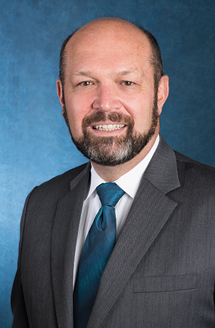
Dr. Friedberg
July 2017—Once upon a time, “breaking news” referred to critical information on the order of an assassination or act of war. Over time, its use came to embrace emergencies and disasters. Now, it seems that anything more curious than “man bites dog” qualifies.
Whether this is due to the emergence of nonstop cable news, Twitter, or Instagram doesn’t matter; it’s simply a fact of life today. Tabloids have become mainstream; self-described (and self-promoted) experts are always at the ready. Unfortunately, while our definition of “news” has expanded, thoughtful assessment and refinement have not kept pace. We seem to be getting a lot of data but not much information and even less wisdom.
When family and friends ask my opinion about a general circulation medical news item, I suggest they take it with a rather large grain of salt until there is real evidence to support it. Meanwhile, I keep an eye open for sources of credible patient-oriented information for them. That is what led me to a well-written and engaging book with an irresistible title (Rigor Mortis) by an award-winning science writer, Richard Harris.
Harris employs case reports to examine issues in the reproducibility of scientific studies. He begins by describing a commentary published in the March 29, 2012 issue of Nature. Cancer researchers C. Glenn Begley and Lee M. Ellis wrote that they had examined 53 original studies submitted to support what looked to be strong research proposals and found that only six could be reproduced. So it goes for 10 dispiriting, page-turning chapters, concluding with a warning against judging science too quickly either way, because some discoveries age better than others. Trust but verify, Harris seems to be saying, but, in any event, scientific inquiry needs to slow down and attend to the foundational steps that enable enduring results.
Reproducibility was a critical goal of those who founded the CAP more than 70 years ago. Shortly after World War II, members of the Clinical Pathology Section of the Philadelphia County Medical Society circulated unknown patient samples among themselves to evaluate for accuracy. F. William Sunderman, MD, a future member of the original CAP Board of Governors, prepared the samples and analyzed the results, which were rather concerning. Several more field tests were no better. The CAP Standards Committee responded by circulating the first Surveys to 500 laboratories in 1949. The rest, as they say, is history.
The CAP Pathology and Laboratory Quality Center, initiated in 2008 to enable and promote excellence in the practice of pathology, was another evolutionary step. Through the Center, guidelines and consensus statements are written by diverse communities of experts who work with staff to ensure that each one is evidence-based, clinically driven, and carefully maintained. Experts from partner organizations on these multidisciplinary committees collaborate to develop what the founding chair, M. Elizabeth Hammond, MD, envisioned: living documents regularly reviewed and revised to promote continuous learning and improvement.
Input from patient advocacy groups is also stitched into the fabric of the Center. The draft guideline for initial diagnostic workup of acute leukemia, coauthored by the American Society of Hematology, is a recent proof of concept. When patient advocates suggested clarification to underscore the need for rapid and complete diagnosis of patients who require urgent referral, the idea was incorporated in the final guideline.
Collaboration with the American Society of Clinical Oncology was foundational to the Center, and our cooperative endeavors continue to multiply. Most recently, we entered into a new partnership with ASCO’s wholly owned nonprofit subsidiary, CancerLinQ LLC, to bolster the expertise provided to ASCO’s CancerLinQ platform, a big-data initiative that will harness and analyze information about real-world patient experience to improve the quality of patient care and outcomes.
This new strategic alliance recognizes the critical role of pathologists across the continuum of patient care. It also expands CancerLinQ access to CAP-developed standardized electronic reporting frameworks for cancer pathology results delivered to external systems. As an official partnering organization, the CAP will educate members about participating in the CancerLinQ platform and requesting access to CancerLinQ Discovery—anonymized, statistically de-identified, fit-for-purpose clinical data sets useful to hypothesis-based oncology research. The CAP is one of seven major medical associations working with ASCO, the FDA, and most recently the National Cancer Institute in this endeavor, which will also inform FDA regulatory strategy regarding emerging and newly approved therapies. At last count, oncology practices and institutions representing more than 1 million patient records from practices in 40 states had enrolled in CancerLinQ.
Closer to home, our new CAP Pathologists Quality Registry has been approved by the Centers for Medicare and Medicaid Services as a Qualified Clinical Data Registry (QCDR) and is set to launch at CAP17. The Pathologists Quality Registry will be powered by FIGmd, the leading provider of clinical data registries. Our registry is the first, and so far only, CMS-approved pathologist-specific QCDR. The registry will simplify compliance with Medicare’s new Merit-based Incentive Payment System (MIPS). The CMS has accepted eight of our existing quality measures for pathology (previous PQRS measures) and endorsed six additional pathology-specific measures that can be submitted through the registry as appropriate. Plus, the Pathologists Quality Registry will create quarterly practice improvement benchmarks for in-house quality improvement assessments that will cover all patients, Medicare and not.
Our fundamental commitment to durable, reproducible quality dates back to the earliest days of the CAP, and as the pace of information growth continues to accelerate, we update the tools used to maintain that quality. The new CMS-mandated registries are the latest tools to combine both quality and performance measurement.
Our hard work over the years has enabled us to enjoy the trust of our colleagues, the respect of our regulators, and the confidence of our patients. That is not “news” and it is not “breaking.” That’s just the way it is.
[hr]
Dr. Friedberg welcomes communication from CAP members. Write to him at president@cap.org.
 CAP TODAY Pathology/Laboratory Medicine/Laboratory Management
CAP TODAY Pathology/Laboratory Medicine/Laboratory Management
